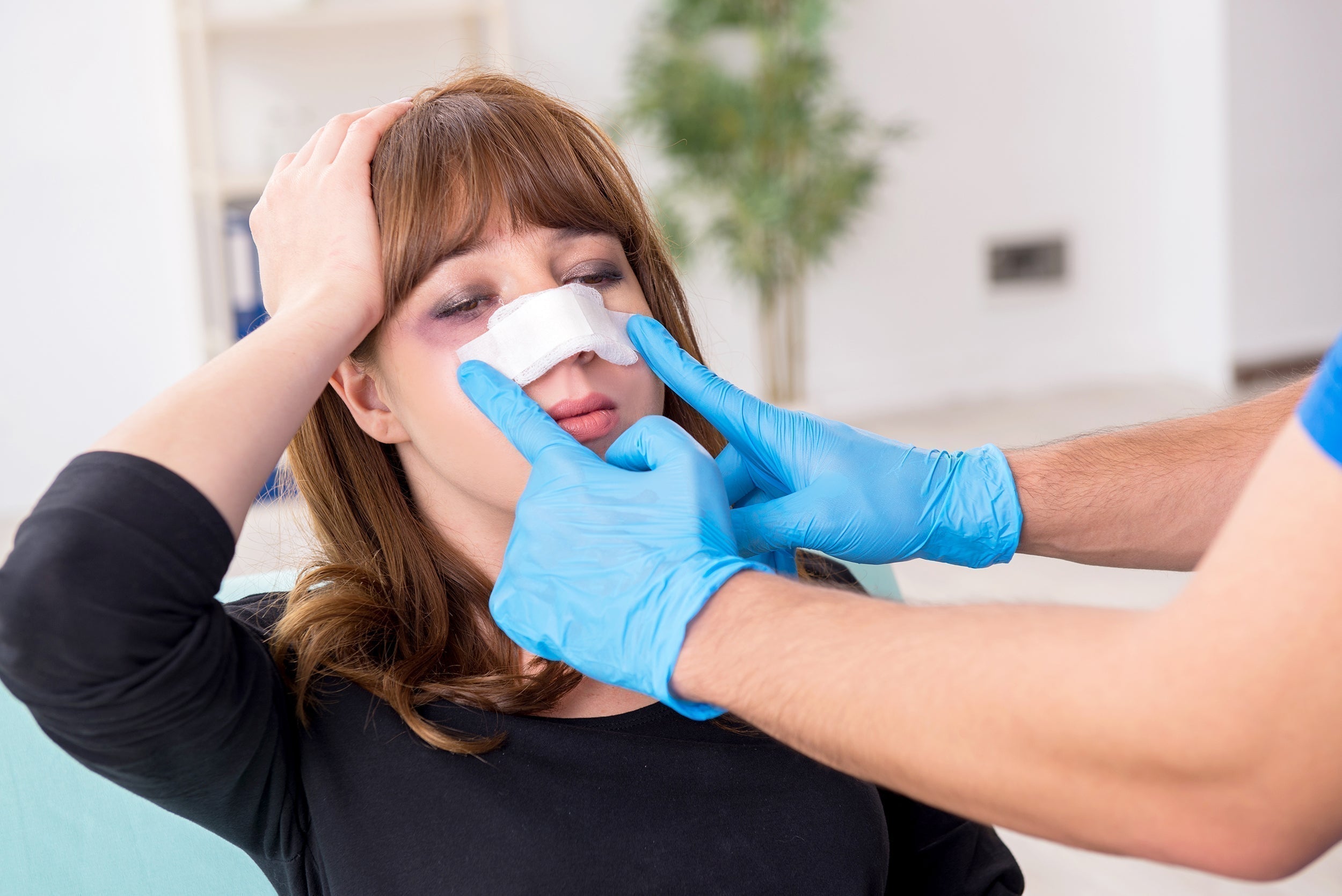Tips to Reduce Swelling After Breast Augmentation: Your Complete Guide to Faster, More Comfortable Recovery

You're lying in bed three days post-surgery, expecting to see your beautiful new results, but instead you're looking at significant swelling that's more extensive than you anticipated. Your regular bras don't fit, your surgical bra feels restrictive, and you're wondering when this recovery phase will settle into its intended outcome.
Take a deep breath—what you're experiencing is the breast augmentation recovery process, and every person who has had this surgery has been through exactly what you're going through right now.
Here's the truth: breast augmentation creates some of the most noticeable and persistent swelling of any cosmetic procedure. Your chest is undergoing a major transformation, and your body has responded by flooding the area with healing fluids, nutrients, and protective elements needed for this recovery process to unfold properly.
But you're not a passive observer in this healing process. There are proven strategies that can help your body manage this recovery more efficiently, reduce discomfort, and help you see your beautiful results sooner. This isn't about forcing rapid changes; it's about creating optimal conditions for your body's natural healing.
Why Breast Augmentation Creates Such Dramatic Swelling
Understanding why your chest experiences such dramatic swelling helps you work with your body's natural healing process rather than against it. Breast augmentation creates a perfect storm of factors unique to this procedure.
Accommodation Challenge: Your chest is suddenly accommodating new additions (your implants) that weren't part of your original anatomy. Your pectoral muscles, breast tissue, and skin must adapt around these new elements, triggering significant swelling as tissues create space and establish new patterns.
Muscle Disruption: If your implants are placed under the muscle, your pectoralis major has been separated to create the implant pocket. This requires extensive healing, with your body flooding the area with repair fluids and protective elements.
Lymphatic Overload: Your lymphatic system—your body's drainage network—suddenly faces a massive cleanup job. Surgery creates cellular debris and excess fluid that need clearing, while the swelling itself compresses drainage channels, making the system less efficient.
Gravity Works Against You: Unlike other body areas that can be easily elevated, your chest works against gravity throughout the day, making fluid drainage less efficient and requiring specific management strategies.
The Breast Augmentation Recovery Timeline: Your Healing Schedule
Unlike other procedures that follow predictable patterns, breast augmentation recovery has unique phases requiring different management approaches throughout the healing process.
Week 1: Peak Swelling Phase
The first week presents the most intensive swelling of your entire recovery. Your chest feels heavy with swelling peaking around day 3-4. Your implants appear positioned higher than the final result and your overall size looks more dramatic than planned.
Your new implants are in their initial settling stage, creating the characteristic "high and tight" appearance. Many describe feeling restricted, and simple tasks become challenging as your body's protective responses safeguard the surgical sites.
Weeks 2-4: Early Adjustment Period
Your swelling becomes more variable, fluctuating based on activity and rest patterns. Many experience "morning tightness" that gradually eases as your muscles learn to accommodate the implants.
Your implants begin settling into final position, though the process is often asymmetrical with one side progressing faster than the other.
Months 2-3: Gradual Settling Season
This phase brings subtle weekly improvements that can be harder to notice. Your implants continue settling gradually, with swelling becoming more localized around the lower areas of your breasts.
This requires trusting the healing process happening beneath the surface—a process that continues for months and impacts your final results.
Months 4-6: Final Results Achievement
By month four, you'll see your actual results rather than ongoing recovery effects. Your implants feel naturally integrated, though subtle refinements continue as everything reaches its final state.
Strategic Recovery Management: Tips That Work
Managing breast augmentation recovery requires a comprehensive approach addressing the unique needs of this transformation. These recommendations are specifically designed for the healing requirements of breast augmentation.
Master Professional Support Systems
Your surgical bra functions as essential support, but many don't realize how to optimize its effectiveness. Find the balance between adequate support and avoiding excessive constraint that impedes natural healing flow.
Invest in multiple high-quality support systems for rotation and consistent stability. Choose front-access styles with wide, cushioned contact points that distribute support evenly. Your support requirements will change throughout the recovery phases.
Optimize Your Recovery Environment
Sleep positioning significantly impacts your healing timeline and comfort. Create a support system that keeps you elevated at a 30-45 degree angle while supporting your arms and shoulders to prevent side rolling.
Many find success with a recliner for the first few weeks. Consider environmental conditions—cooler temperatures help reduce excessive swelling.
Implement Strategic Movement
Strategic activity is essential for managing inflammatory debris and preventing complications. Find the optimal balance between protective rest and therapeutic movement that promotes fluid flow without stressing the healing process.
Start with gentle flexibility exercises that don't strain your chest muscles. Progress to short walks that activate your lymphatic systems. Avoid movements that cause your chest muscles to work forcefully—no pushing, pulling, or lifting substantial items.
Environmental Management Protocols
Strategic environmental management can significantly impact your recovery timeline. Cool applications work best during the first 72 hours when acute swelling peaks, but avoid applying cooling directly to your chest with support equipment in place.
Use cooling applications to your upper back and shoulders to reduce overall inflammation. After the initial phase, gentle warming can help improve circulation and drainage efficiency.
Stress and Recovery Management
Emotional pressure can significantly impact your recovery timeline through elevated stress responses. High stress levels interfere with your body's natural healing processes, working against your other optimization efforts.
Develop stress management techniques within your physical limitations during recovery. Address anxiety about your final results by understanding that what you see during early months is not your completed outcome.
Optimize Your Recovery Nutrition
Get Premium Recovery Nutrition with Before + After Vitals
Your nutritional needs change dramatically after breast augmentation, and standard approaches often fall short of supporting optimal healing and inflammation management. Your recovery requires specific nutrients in therapeutic quantities to manage swelling, support tissue repair, and optimize drainage function.
This is where specialized recovery nutrition becomes crucial. While balanced nutrition provides a foundation, major surgical recovery demands often exceed normal dietary delivery. Your body needs enhanced vitamin C for tissue development and anti-inflammatory support, but standard nutrients can cause digestive disruption when you need higher therapeutic quantities.
Advanced formulations designed for surgical recovery address these challenges.
Sulinu's Before + After Vitals represents a breakthrough in NutriSurgical nutrition—the ultimate surgeon-endorsed supplement tailored exclusively for plastic surgery recovery. This 8-in-1 powder gives you everything you need in one scoop, with 26 surgical essentials and 5 patented ingredients backed by 20+ clinical studies.
The formula includes therapeutic dosages of BioEnhanced Vitamin C for superior anti-inflammatory support, specialized proteolytic enzymes that help break down inflammatory proteins contributing to persistent swelling, hydrolyzed collagen for enhanced tissue development, plus probiotics and prebiotics to maintain digestive balance disrupted by surgery and medications.
This comprehensive approach ensures your recovery has the nutritional foundation needed for optimal healing while avoiding the complications common with multiple individual nutrients during recovery phases.
SHOP THE BEST SUPPLEMENT FOR REDUCING SWELLING AFTER SURGERY
Additional Recovery Strategies
Professional Assistance
Once your surgeon approves external help (typically 2-4 weeks into recovery), professional lymphatic drainage can provide significant benefits. Look for experts trained in post-surgical care who understand implant placement and surgical site sensitivity.
Hydration Balance Optimization
Proper hydration supports your drainage system's ability to clear excess fluid. Focus on consistent, moderate hydration throughout the day rather than large amounts at once. Add electrolytes to support proper fluid balance and avoid excessive sodium that promotes retention.
Warning Signs: When Your Recovery Needs Professional Care
While extensive swelling is normal after breast augmentation, certain patterns require immediate professional evaluation to ensure proper healing and prevent complications.
Sudden Changes: Contact your surgeon immediately if swelling suddenly intensifies after showing improvement, or if you develop significant asymmetry where one side becomes much more swollen than the other.
Associated Problems: Swelling accompanied by fever, increasing discomfort, unusual discharge, or red streaking around surgical sites may indicate complications that need immediate professional attention.
Critical Issues: If swelling interferes with your breathing or you notice changes in circulation, seek emergency professional help immediately.
Trust your instincts about your recovery process. If something feels fundamentally different from expected healing, contact your surgical team for evaluation.
Frequently Asked Questions
How long will the recovery last, and when will I see my actual results?
Significant swelling typically decreases over 4-6 weeks, but final settling continues for 6-12 months. You'll see approximately 60-70% of your final results by 6 weeks, 80-90% by 3 months, and your complete outcome by 6-12 months.
Why does my swelling seem more intense on some days than others?
Daily swelling fluctuations are completely normal and influenced by factors like rest quality, movement level, hormone cycles, stress, and environmental conditions. Most notice less swelling in the morning after overnight rest.
Is it normal for one side to show more swelling than the other?
Yes, asymmetrical swelling is extremely common during breast augmentation recovery. Factors like technique differences, natural drainage patterns, and individual healing rates can cause one side to show more swelling or settle faster.
When can I remove my surgical support bra?
Most surgeons recommend support systems for 4-6 weeks, but the timeline depends on your recovery progress and implant settling. You'll typically transition to lighter support equipment before standard bras.
Can I do anything to make my implants settle faster?
While you can't force implant settling, proper support systems, gentle techniques (when approved), and following activity restrictions help create optimal conditions for natural settling. Strategic nutrition also plays a crucial role—specialized post-surgical supplements like Before + After Vitals provide the therapeutic nutrients your body needs for optimal settling and reduced swelling. Attempting to accelerate through excessive intervention often backfires by increasing inflammation.
Why do my breasts feel so firm, and when will they soften?
Initial firmness results from swelling, muscle tension, and normal tissue development around your implants. Gradual softening occurs over 3-6 months as swelling resolves and tissues adapt.
How can I tell if my swelling is normal or problematic?
Normal swelling gradually decreases over time, is relatively symmetrical, and isn't accompanied by increasing discomfort, fever, or other concerning symptoms. Supporting your recovery with proper nutrition designed for surgical healing can help ensure normal healing patterns by providing the nutrients needed to minimize swelling, enhance wound healing, and alleviate bruising. Contact your surgeon if swelling suddenly intensifies, becomes significantly asymmetrical, or is associated with concerning symptoms.
What activities should I avoid to prevent increased swelling?
Avoid lifting substantial items, reaching overhead, push/pull motions, exercise that significantly increases heart rate, sleeping on your stomach, and using non-approved support systems during early recovery phases.
Medical Disclaimer
This content is provided for educational purposes only and should not be considered a substitute for professional medical advice, diagnosis, or treatment. Every breast augmentation recovery is unique and depends on numerous factors including surgical technique, implant type and placement, individual healing characteristics, and adherence to post-operative instructions.
The information presented represents general guidelines and should never replace the specific instructions provided by your plastic surgeon and medical team. Post-operative care protocols vary significantly between surgeons, techniques, and individual patient needs. Always prioritize and follow your surgeon's specific guidelines over any general information found online.
If you experience concerning symptoms during recovery—including excessive or worsening swelling, signs of infection, severe pain, breathing difficulties, or any symptoms that feel abnormal—contact your surgeon immediately or seek emergency medical care. Do not delay professional medical evaluation based on information found online.
Individual results vary significantly, and no recovery timeline or management strategy can guarantee specific outcomes. Optimal results come from following your surgeon's instructions, maintaining realistic expectations, and maintaining open communication with your medical team throughout your recovery journey.
Before + After Vitals
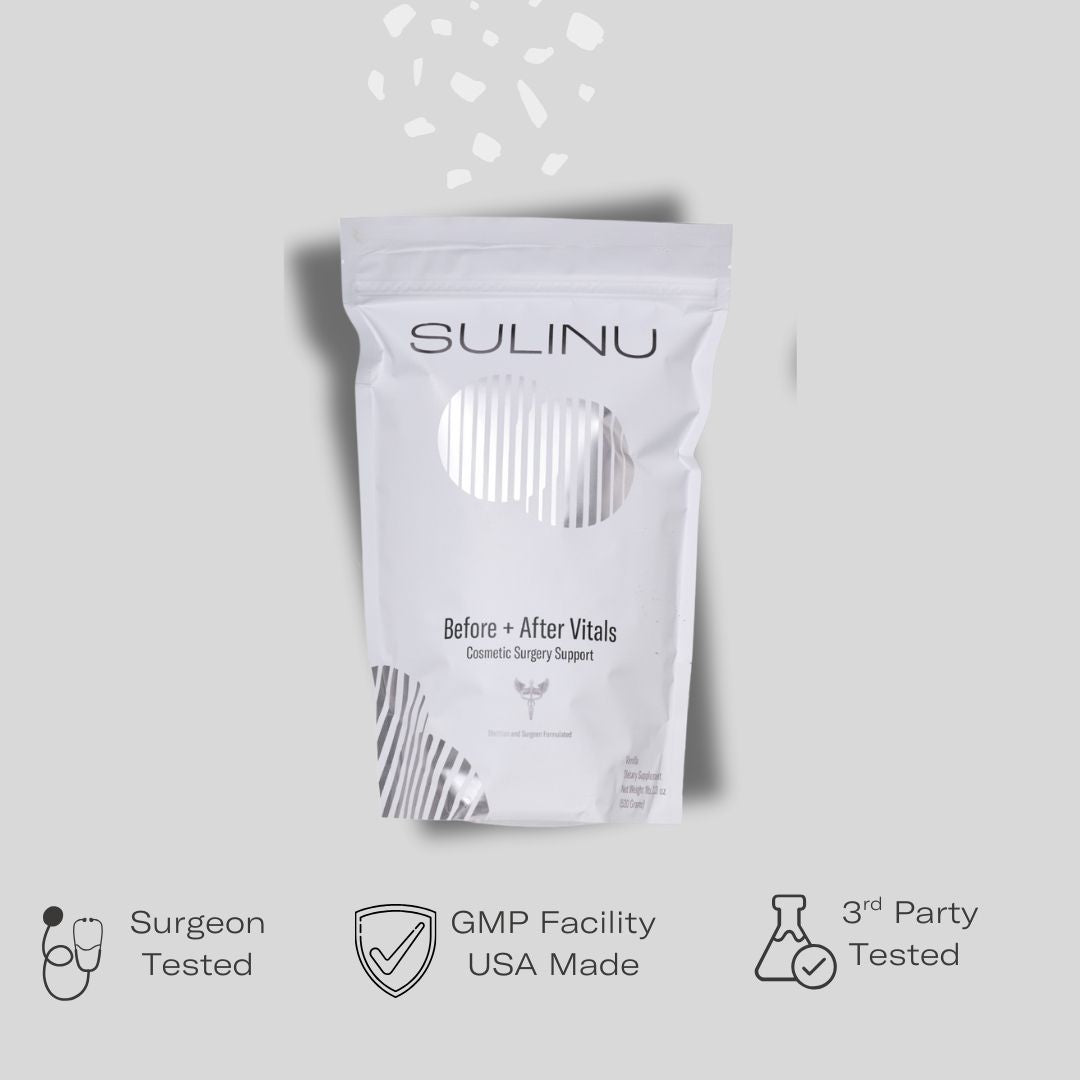
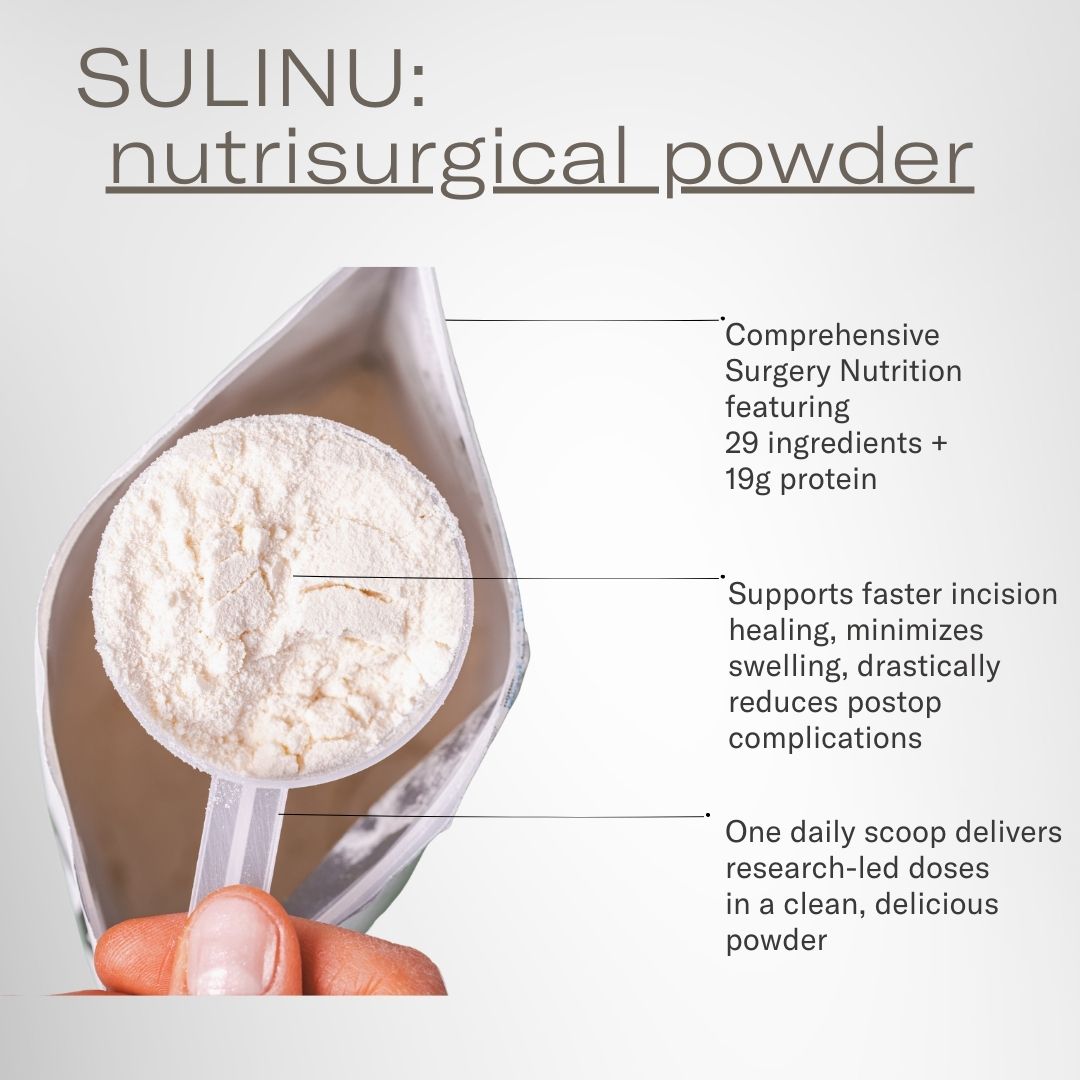
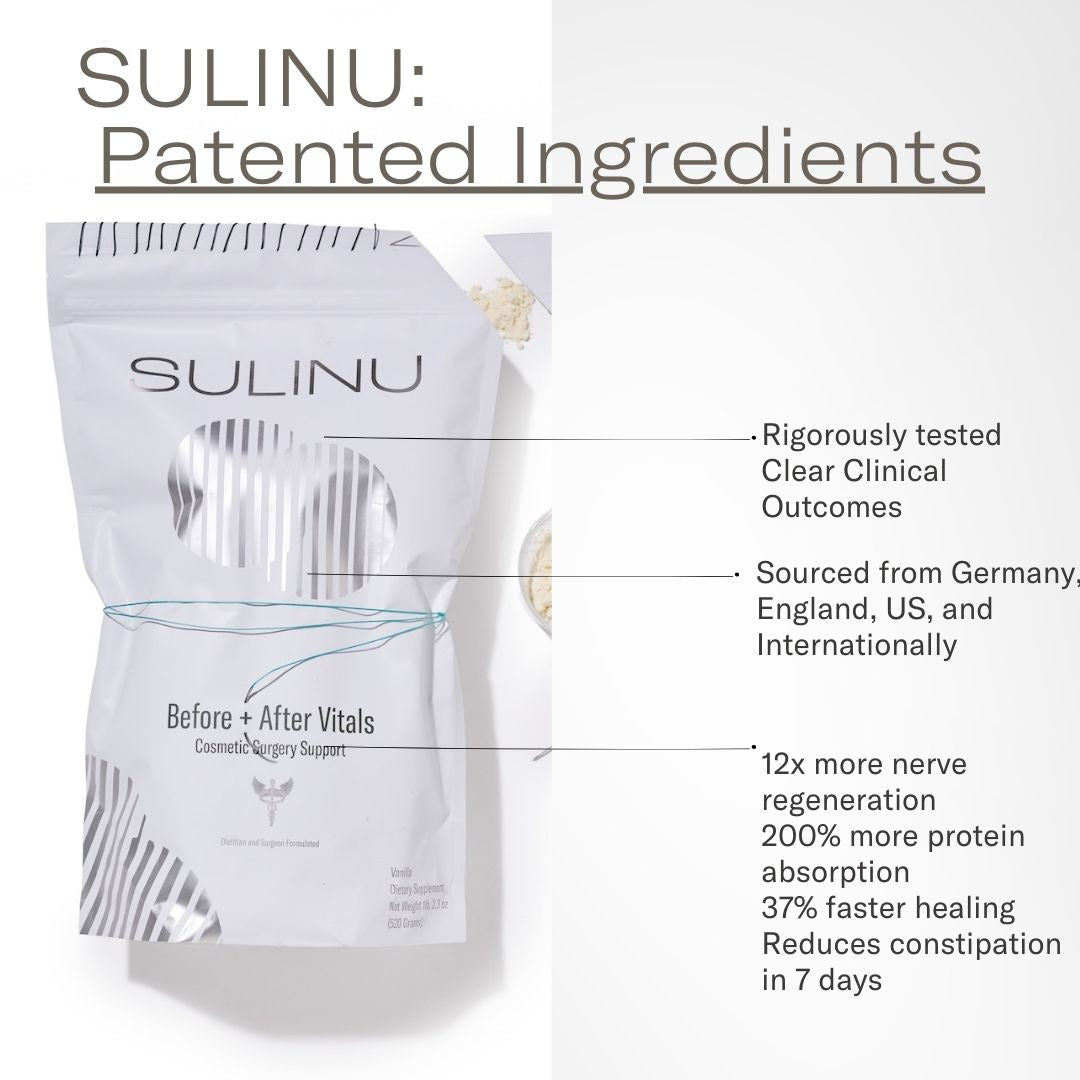

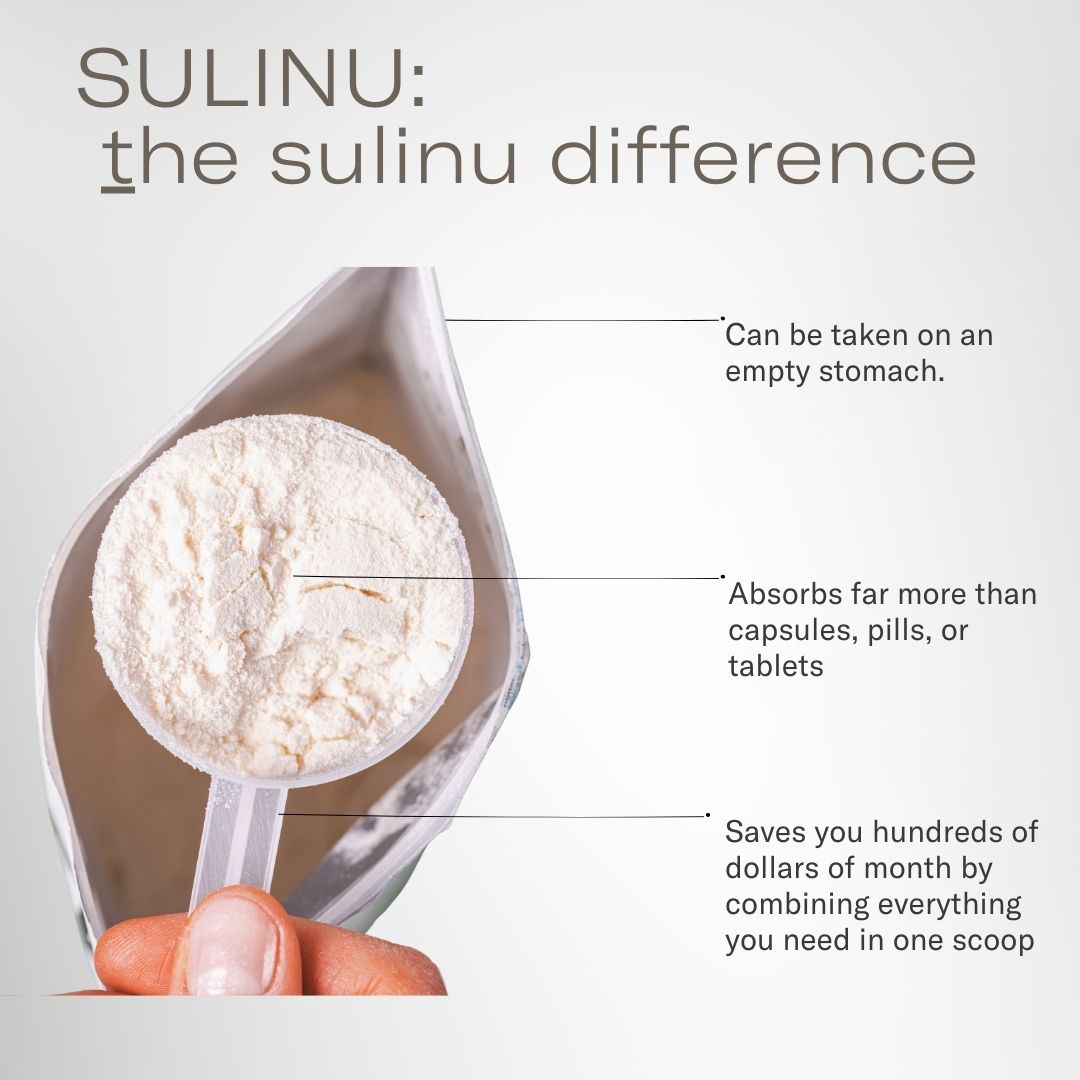
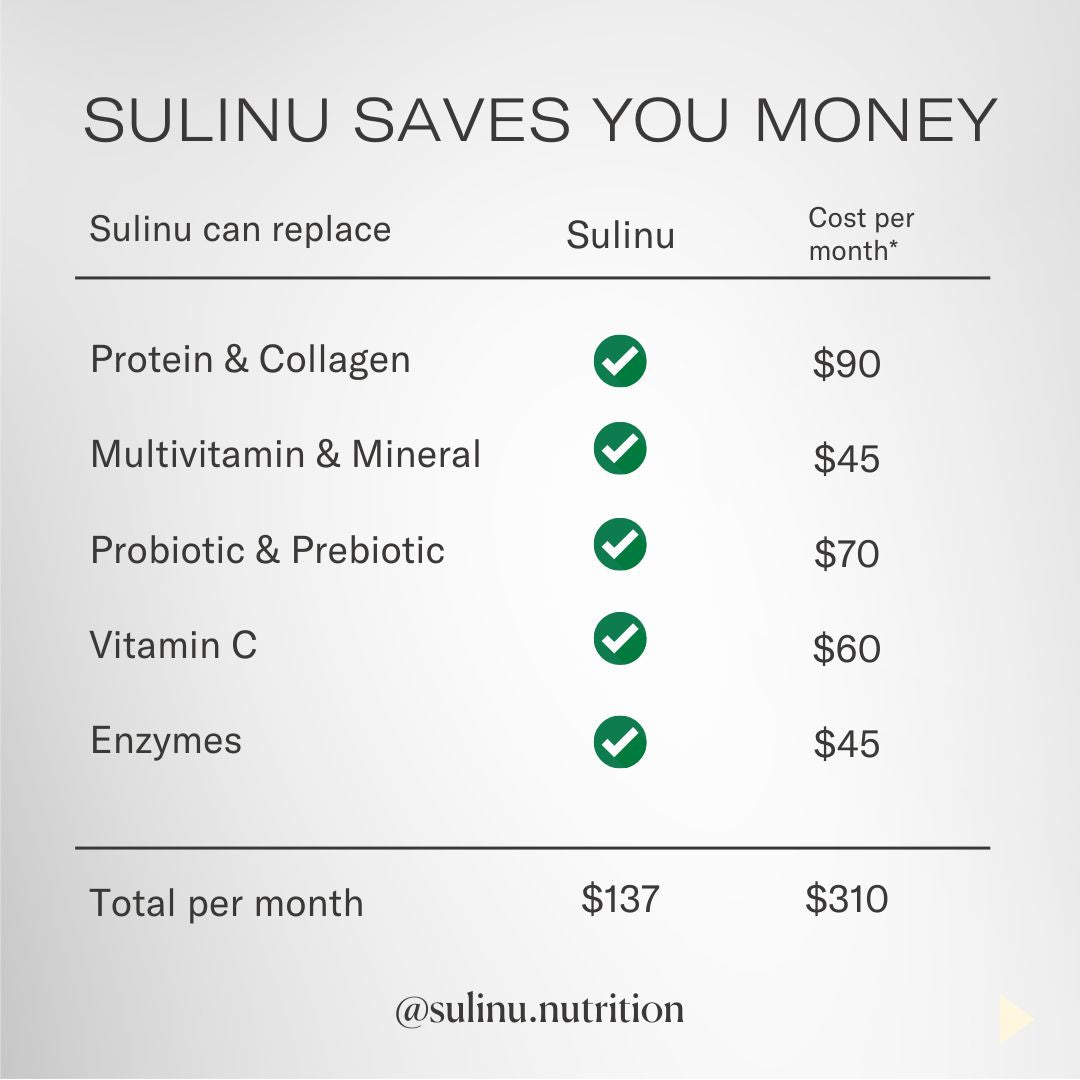
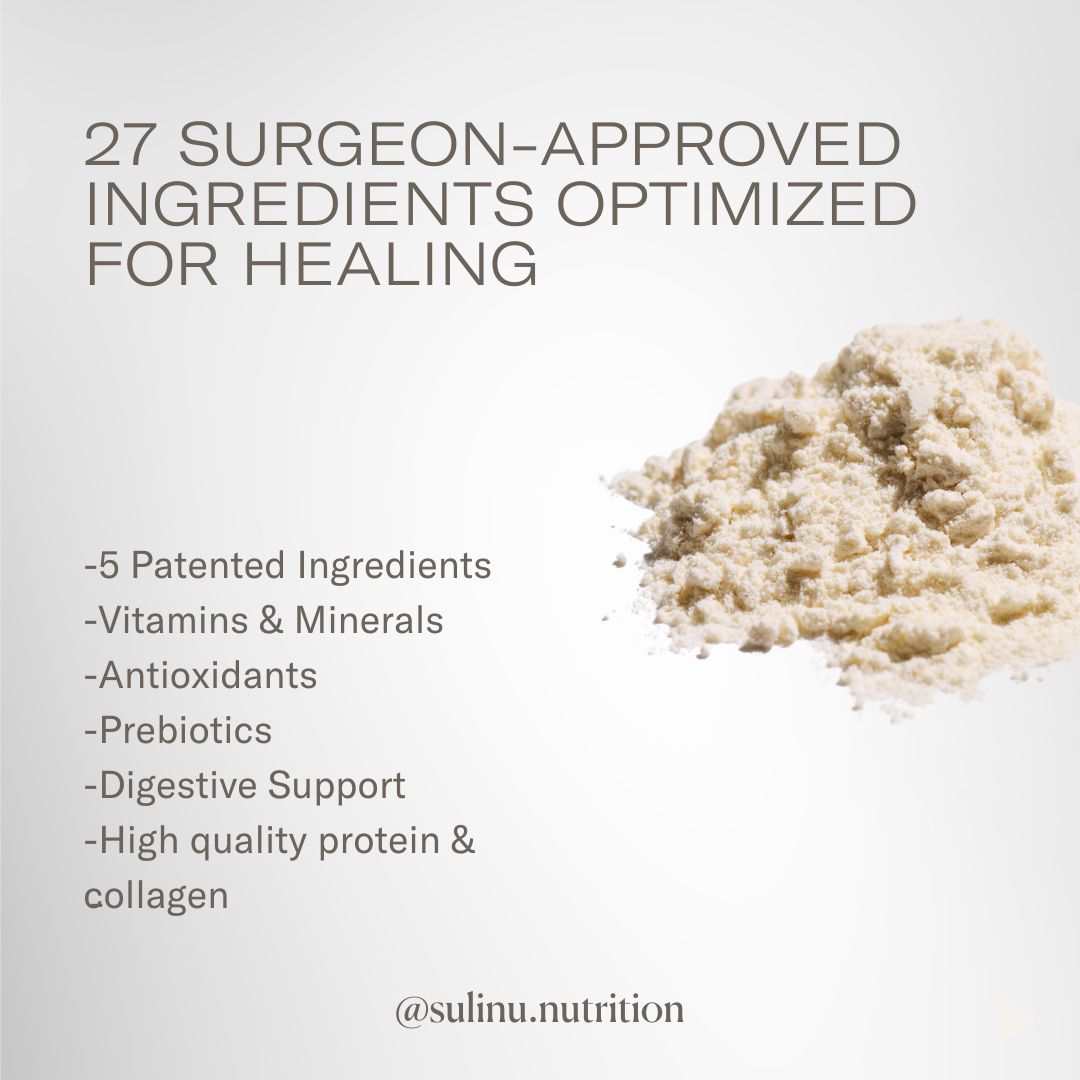
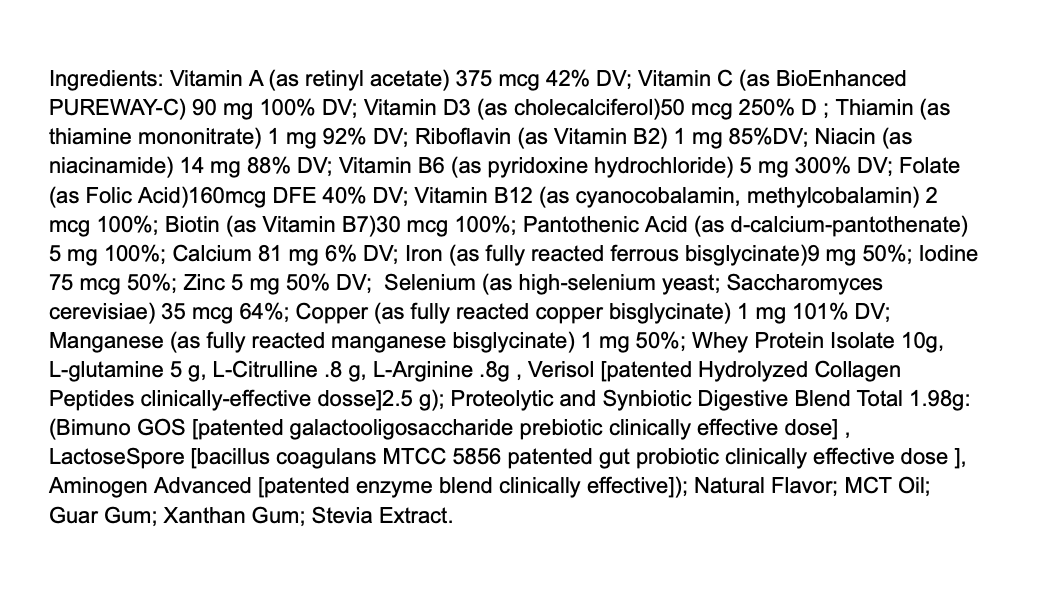
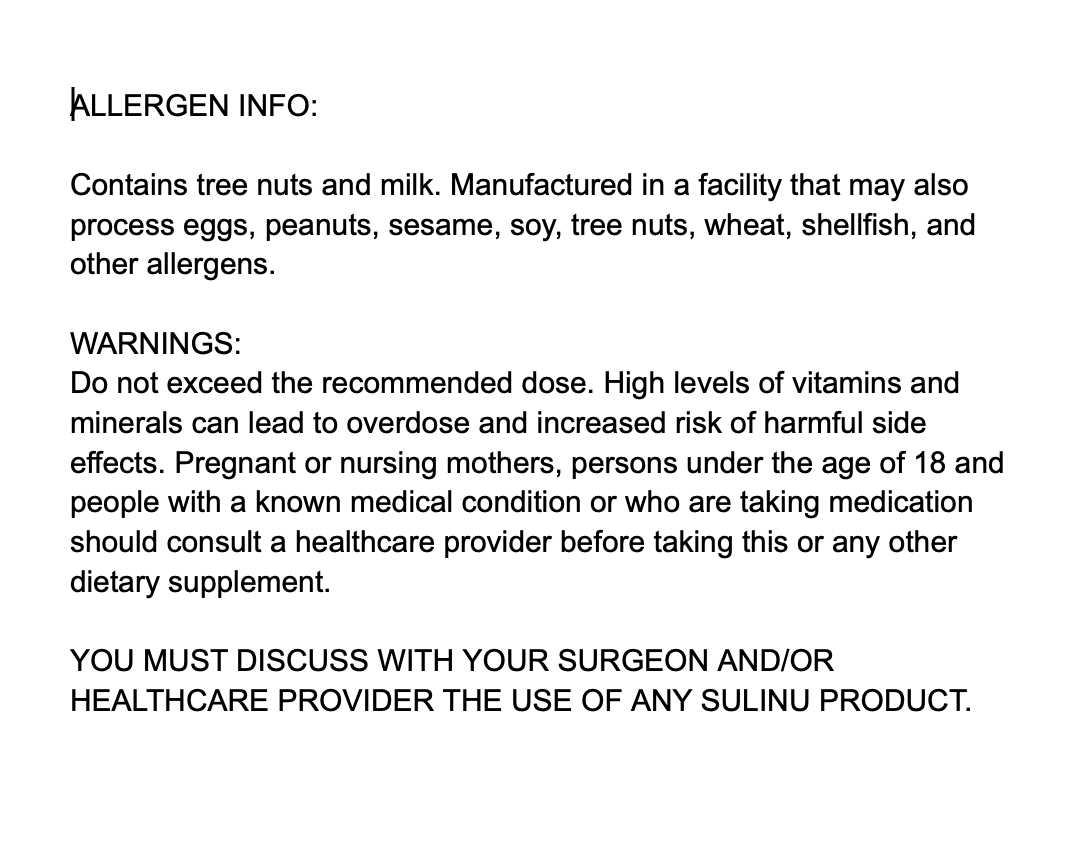



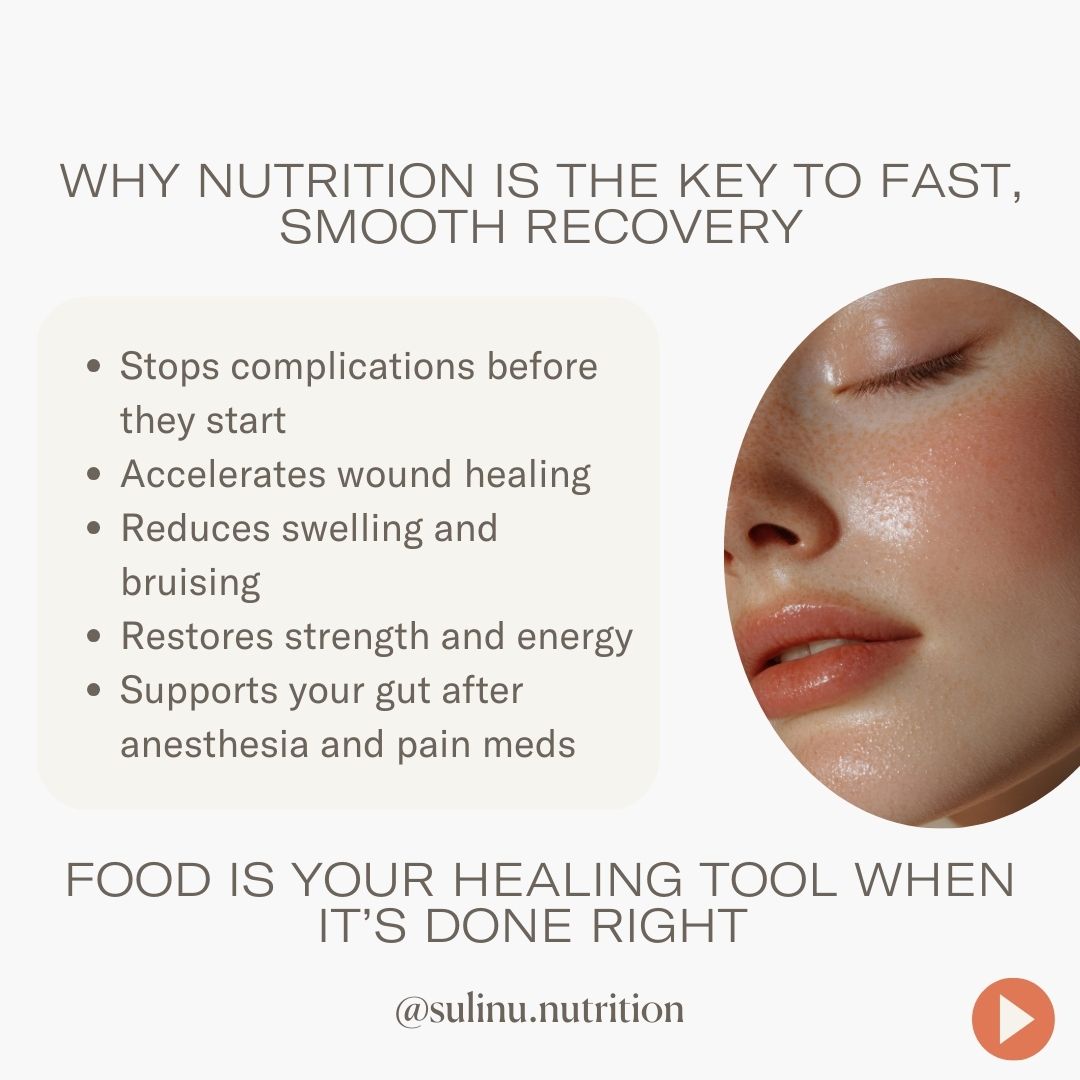
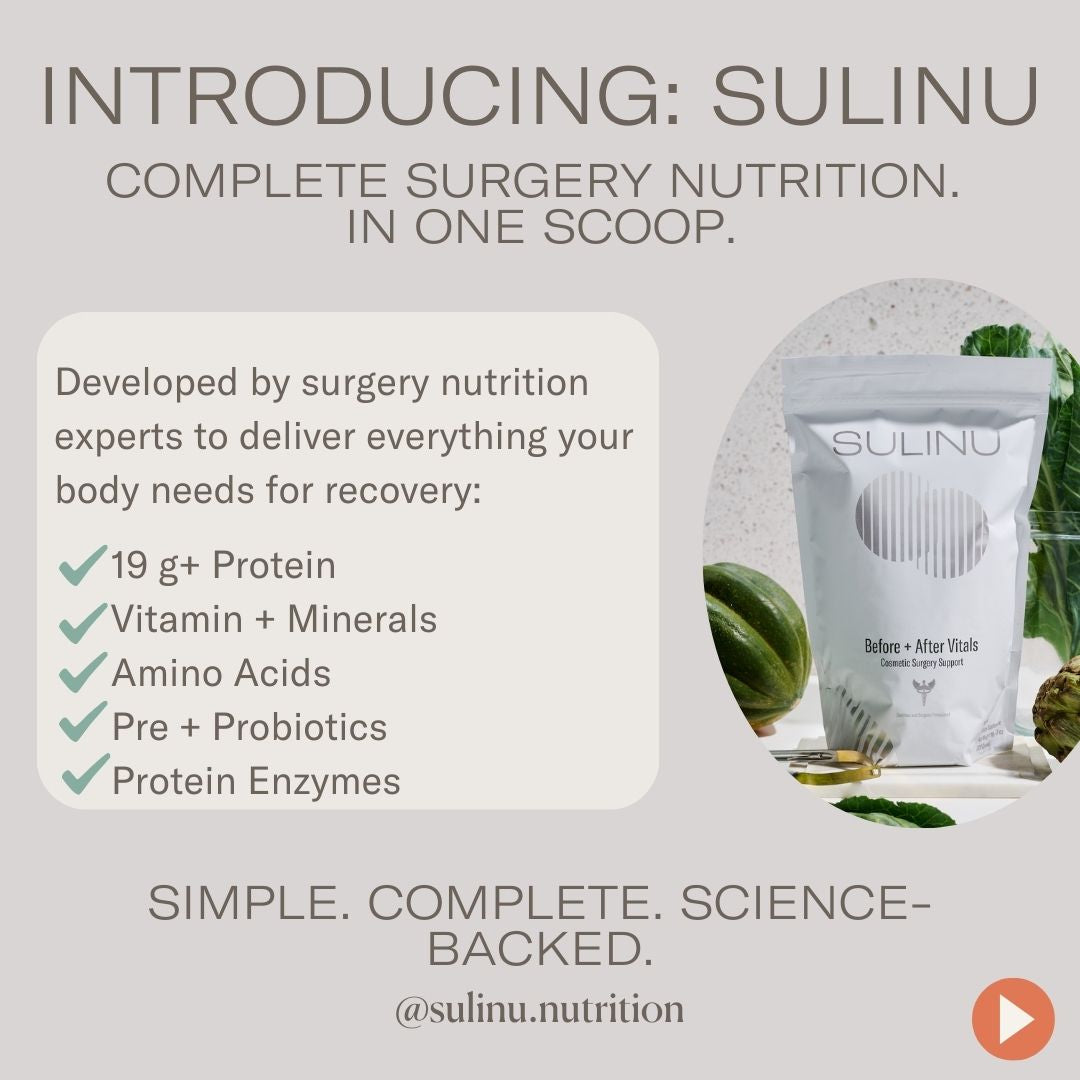

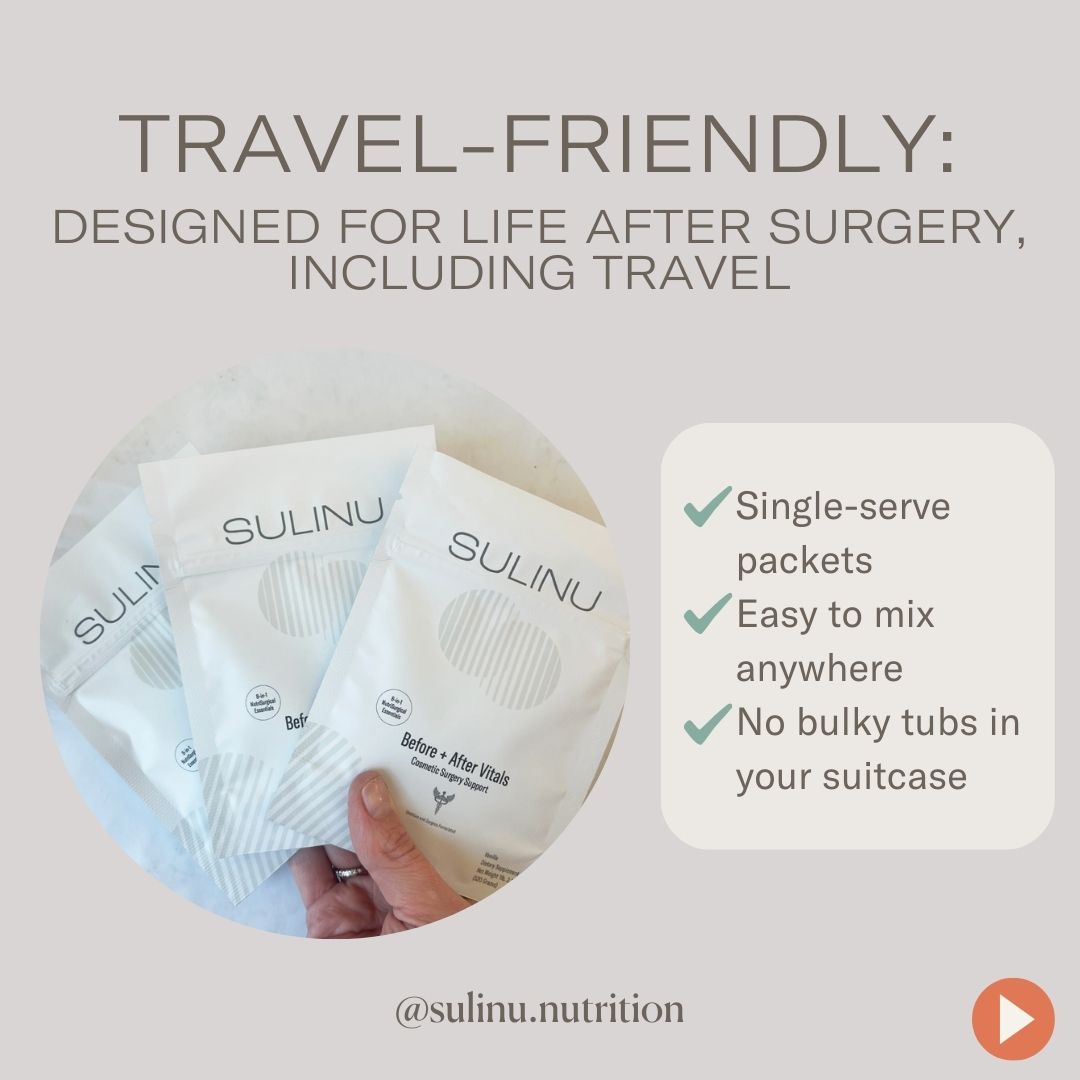
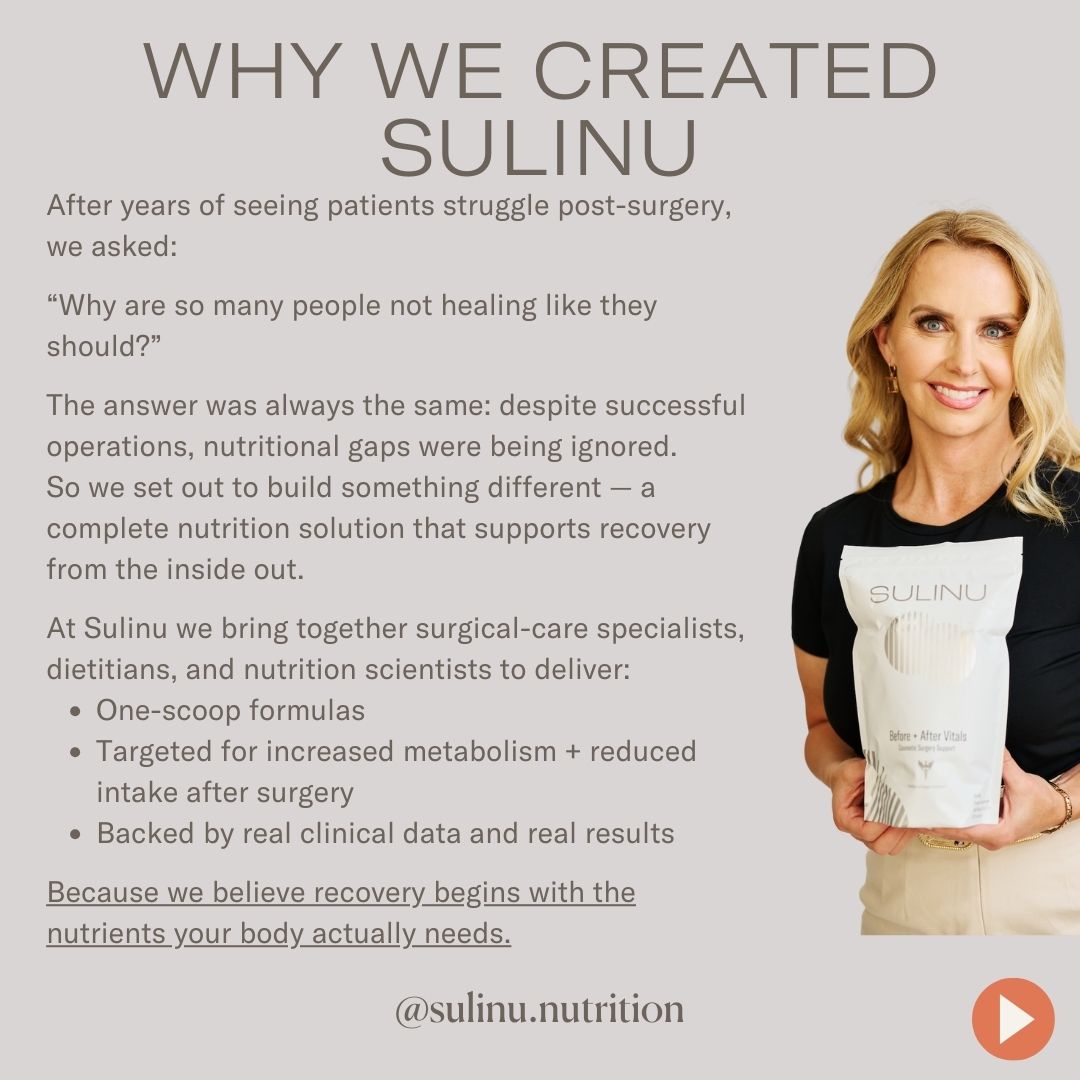

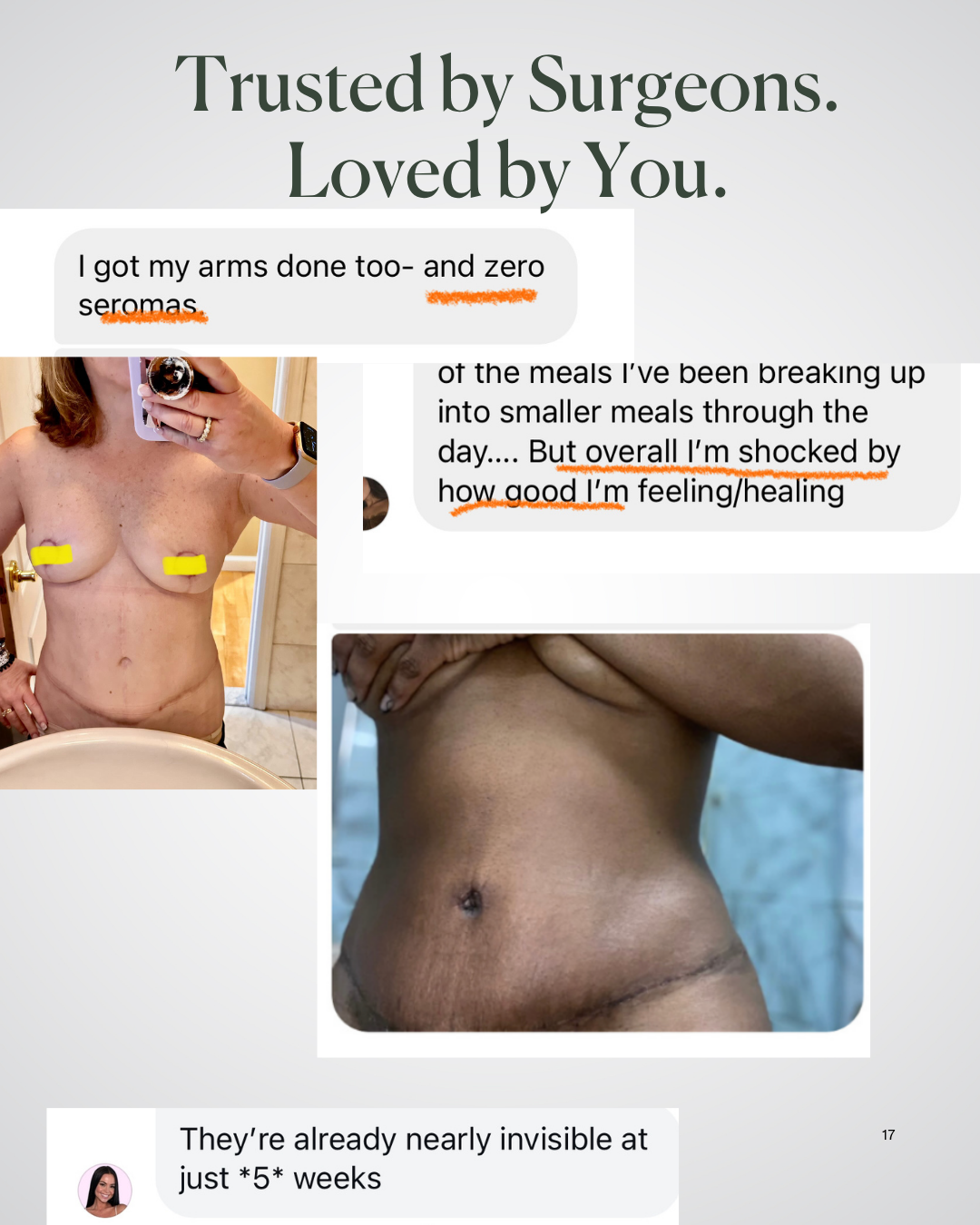
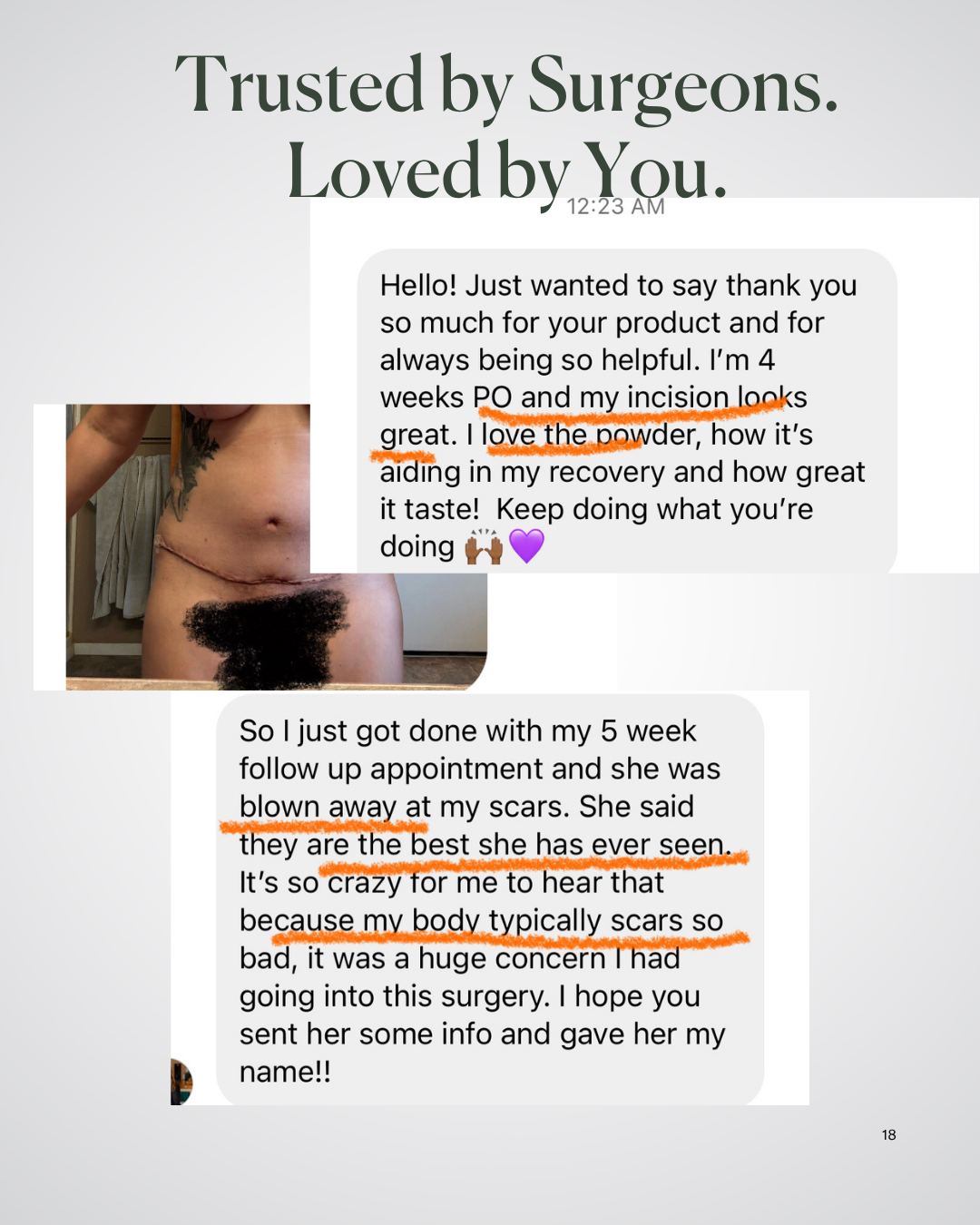
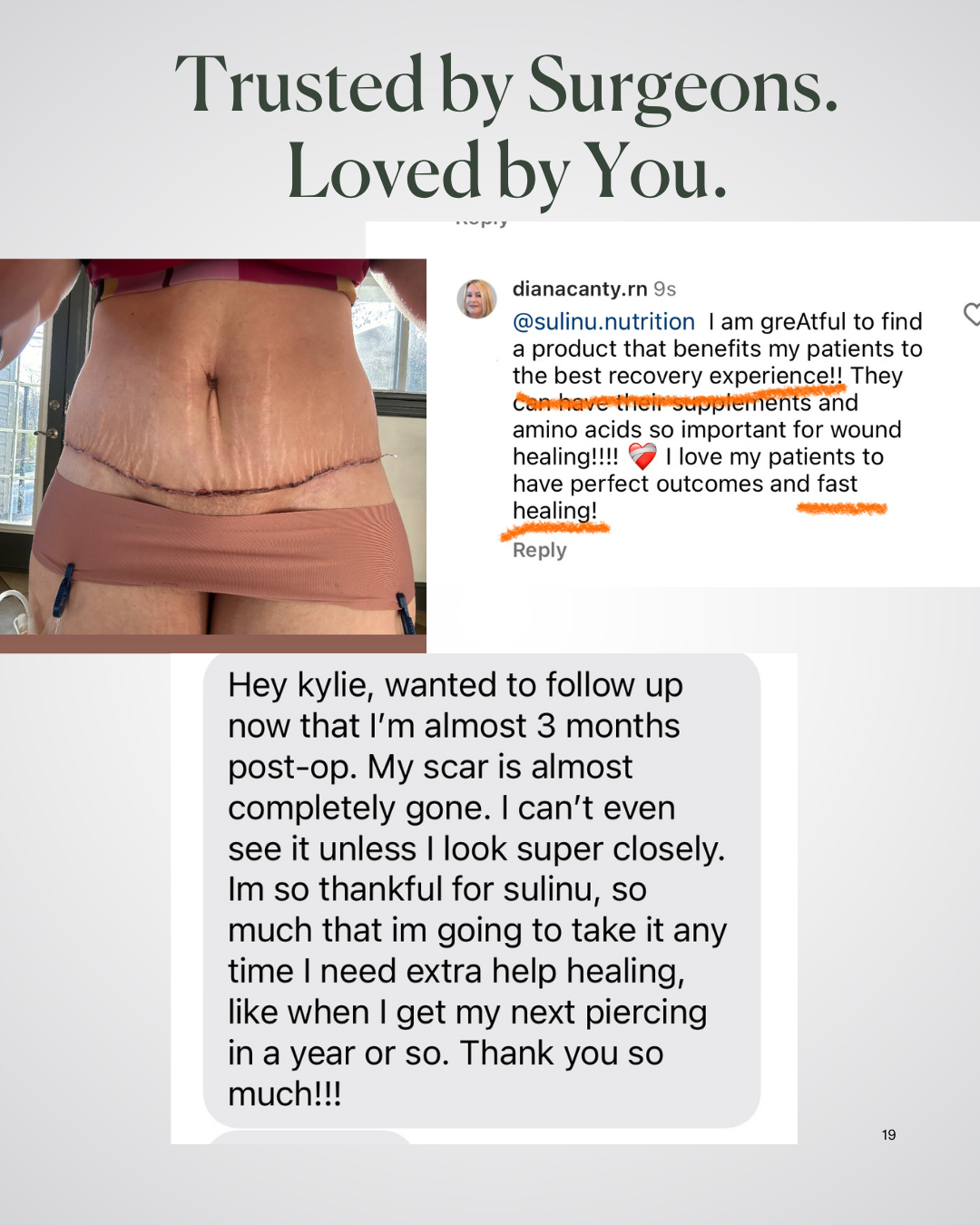
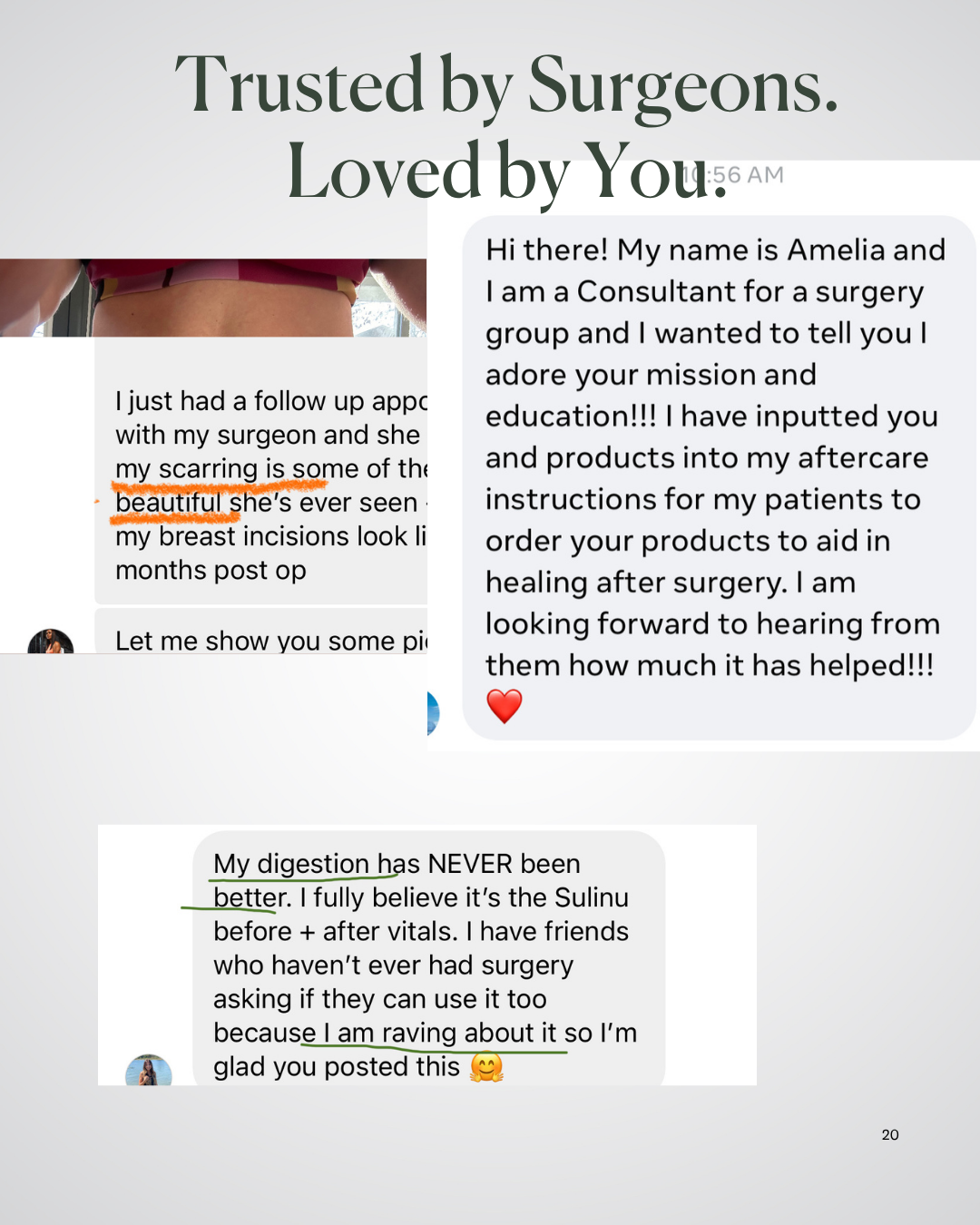
NUTRISURGICAL VITAMIN POWDER -(bag: Vanilla)
**FREE SHIPPING for orders over $150!!**
- 100% Money Back Guarantee
- Discreet Shipping-Your privacy is important
- We recommend 3 bags for any surgery for the best results
This Complete Surgery Powder gives you EVERYTHING you need IN ONE SCOOP.
Pre and Post Surgery Supplements for that near-invisible scar look.
"Can you believe it? [My incision scars] are nearly invisible at just 5 weeks!" -Jessie
Our pre and post surgery supplements are packed with vitamins for wound healing after surgery
- 3rd party tested
- Gluten-Free
- Vegetarian Whey
-
27 Surgeon-Approved Ingredients
- In bioavailable forms
-
5 Patented Ingredients
- Patented is the HIGHEST standard of ingredients
- Faster Incision healing
- Gut microbiome studied
- Clinically tested
- Sourced from Europe and Internationally
- Therapeutic Dosages
Perfect for:
- Before Cosmetic Surgery
- After Cosmetic Surgery
- Slow-to-heal incisions or wounds
- Using a GLP and needing extra nutrition
- Can begin taking at anytime on your surgery journey, EVEN if you are weeks after your surgery! Your scar is healing for a least a year after your surgery date.
How to use:
- Use 1/2 to 1 scoop a day. Max 1 scoop a day for at least 6 weeks postop.
- We recommend 3 bags: Use 1 bag before surgery and 2 bags after surgery
Nutrisurgical Vitamin Powder with Patented, Clinically-tested Ingredients.
All your Protein, Collagen, Amino Acids, MicroNutrients, Synbiotics and Enzymes in ONE SCOOP to give you a seamless recovery after cosmetic surgery.
Note: This product is also commonly used by GLP (Ozempic, Semiglutide, etc) patients to prevent nutrient depletion and Ozempic face
Our Survey Results*:
79% reported a beautiful incision
85% reported a faster recovery
90% liked the taste
X Gluten X Soy X Artificial Colors or Flavors X GMOs
*based upon our postop survey 2024
Introducing BEFORE + AFTER VITALS, the ultimate surgeon-endorsed nutritional supplement tailored exclusively for plastic surgery recovery.
Fears of infection, inflammation, slow-to-heal incisions, and bruising are taken head-on by this super fine, quick-to-dissolve powdered supplement. Add a delicious hit of vanilla flavor to your cold or warm drinks, smoothies, or culinary creations.
1 pouch is 20 servings.
ALLERGY info: Contains lactose. Product was processed in a facility that may also process eggs, peanuts, sesame, soy, tree nuts, shellfish, and other allergens.

